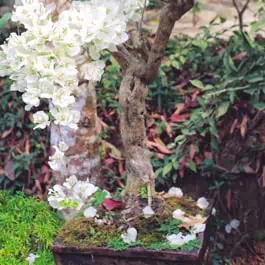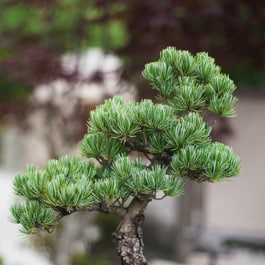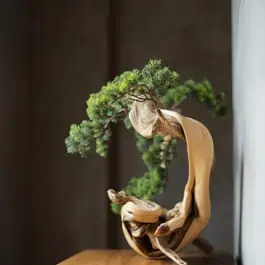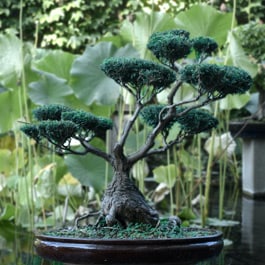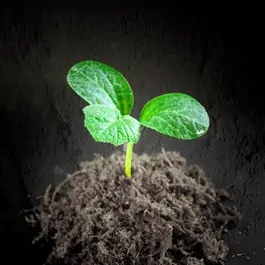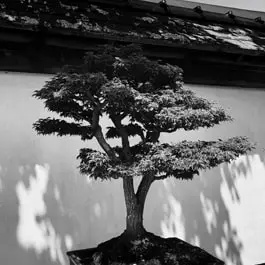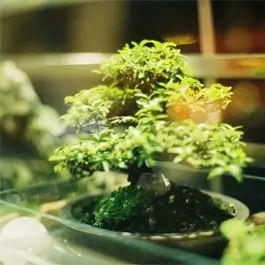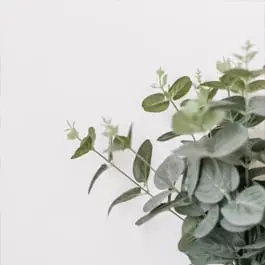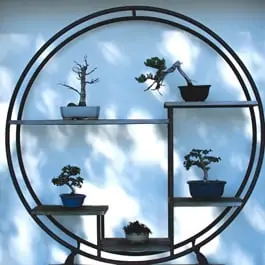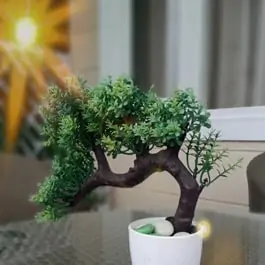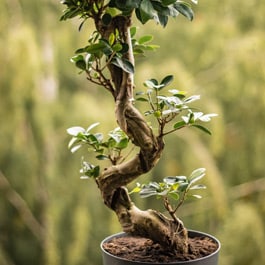Bonsai-express.com is your foremost go-to online platform for all information you may require about Bonsai cultivation. With over a decade of experience in the industry, no doubt we are fully endowed with the adequate knowledge and skills needed to be the best in the industry. It doesn’t matter whether you are an inexperienced or an expert trying to hone your skill, we have all the necessary information you may need about the art of Bonsai to make you better.
Although Bonsai may have started in Asia many years ago, the practice of the art has transcended beyond its origin with millions of people around the world engaging in the culture in one way or the other, whether as a profession or as a hobby.
People around the world fell in love with Bonsai tradition for different reasons, however, these reasons can be traced back to the benefit associated with the practice, a few of which include; air purification, stress reduction, improve well being, maintain humidity, interior decoration, and many more.
In fact, by merely looking or reading about the fun fact about the tree, you can’t help but remain intrigued as you go deeper and deeper into the processes involved in successfully growing a Bonsai tree. Here’s a quick rundown about the whole tradition to help familiarize aspiring Bonsai growers with the practice.
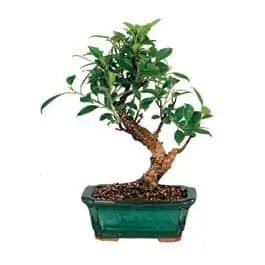
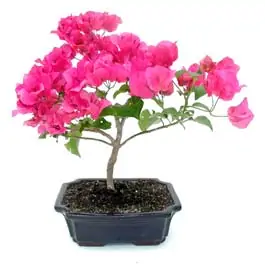
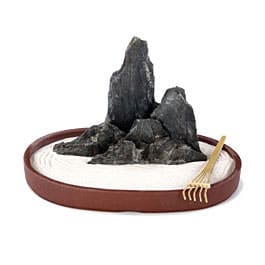
Related terms and common misspellings: bonzai, bansai, banzai, banzi, bansi, bonzi, bonsi
What is Bonsai?
For a quick understanding, just know that Bonsai are trees or plants that are grown in a container in such a way that they will maintain their beauty, or in some cases, grow prettier than they would have been if grown in the wild.
Bonsai is a Japanese word that means “Tray planting”, which also has a similar meaning to the word “Penjing or Penzai(盆栽) in China. Penjing is an original traditional art practiced in China that involves growing trees in small pots while retaining all their natural traits except their size. The Vietnamese also have similar culture known as Hòn non boô.
History of Bonsai
Although the word Bonsai is Japanese, however, the art it describes has long been in practice in China before the tradition spread like a virus spread to the eastern part of Korea and then Japan where it became popular. The Chinese have started the practice of Bonsai in 700 AD, which was known during that period as ” Pun-sai”.
During this time, the practice of Pun-sai (Bonsai) was popular among the Chinese elite only, with both the specimen and trees harvested directly from nature used as luxurious gifts before it was introduced to the Japanese during the Kamakura period. A period in both Chinese and Japanese history where the Japanese started to incorporate the traditions of the Chinese into their culture.
Two factors account for the wide acceptance of Bonsai in Japan, — the influence of Zen Buddhism and the fact that Japan at that time did not have a large landscape like China (Japan only had 4% of the total landmass of China’s mainland). After the acceptance of the Bonsai tradition in Japan, the Japanese developed new styles, tools, and techniques that were completely different from the Chinese.
For about 3 centuries, the Bonsai tradition remained on the shores of Asia until the recent time when the tradition is practiced across the whole continent.
Cultivation of Bonsai
There are lots of activities involved in growing a Bonsai tree because you have to grow a particular tree species in a container while also maintaining their natural traits except their size, in such a way that they will look exactly as they would if grown in the wild.
When trying to cultivate a bonsai tree, the first thing you need to be concerned about is how to start. As a beginner, you will have to decide which method of propagation is best for you. You can start Bonsai tree propagation through cuttings or seed or you can buy nursery stock or ready-made Bonsai trees from Bonsai stores. Know that whichever method you choose, you are still going to have similar results, albeit the time for results may differ depending on the tree species you are growing.
After deciding which method of propagation is best for you, your next line would be planting the tree and following up with adequate care requirements. They are requirements for each Bonsai tree in general include; the growing environment ( watering, soil volume, temperature, and sunlight), Repotting, pruning, Soil and fertilization, pest management, and location (indoor and outdoor). Note that the care required for a Bonsai tree differs from species to species, therefore, you must know the care requirement suitable for the species of Bonsai you intend to grow.
Artistry of Bonsai
People all over the world grow Bonsai trees to create a particular artistic impression. Before an object can be said to have an artistic impression, such object must be provocative, evocative, natural, interesting, cohesive, descriptive, dynamic, clever, and lastly, it must have flow and rhythm.
The artistry design of Bonsai lies in the way they are styled and shaped, and each shape has a particular meaning to them. Also, each species has a specific style and shape that best suits its structure, hence, you must learn the various ways in which your Bonsai tree can be styled so that you can be able to convey your intended message to onlookers.
Below are some styles in Bonsai tradition and their associated meanings.
Vertical-shaped Bonsai tree depicts, strong, confident, lonely, similarity, uniformity, manmade, companionship, hard, rigid, and a group of people.
A perpendicular-shaped Bonsai tree means, interruption, static, disjointed, stoic, masculine, and stable.
A Bonsai tree-shaped to be slanty means, rising, bursting, action, stability, perspective, drama, and precariousness.
A horizontal shaped Bonsai tree depicts, calm, restfulness, calm, mature, stable, natural, lazy, flowing, relaxed, slow, sprouting, spontaneous, youth, reaching, hanging, weeping, sad, tired, wilting, and feminine.
A Bonsai tree-shaped to form an Angle implies, energy, masculine, activity, fast, chaotic, tortured, energetic, anger, conflict, and confusion.
A round-shaped Bonsai is styled that way to mean, luxury, delicacy, feminity, informality, slow, comfort, instability, leisure, and whole.
Bonsai tree spiritual benefits
Humans and plants are living side by side from the beginning and they have developed a good relationship which brings benefits for both entities. When we keep these plants inside our rooms in the form of bonsai, they bring a wide range of health as well as spiritual benefits.
Calm and Relaxed
Having greenery in small shapes inside your room has a great effect on lowering blood pressure while keeping you calm and relaxed all the time.
Reduces Stress
Because of their refreshing environment, bonsai plants have the ability to tackle various psychological aspects and feelings including stress.
Develops Well Being
Living while having greenery and bonsai plants around you can enhance your daily productivity and change your attitude as well, in a positive manner.
Help you be Patient
Bonsai usually take a lot of time to grow to their full extent. Waiting for it develops a sense of patience and this helps you achieve your goals more effectively.
Become Compassionate
As you need to take care of bonsai on a regular basis, it makes you more responsible in your daily routine as well.
Peace
It helps you achieve spiritual peace and keep all things balanced while being grateful for what you have.
Simplicity and Harmony
Having bonsai in your room makes you love simplicity and harmony.
Make Soul Happy
You get more attached to nature and get happiness from these little things instead of finding happiness in an outdoor noisy environment.
Advantages of bonsai tree
Where it brings huge benefits for your soul and spirituality, it can also play an important role in the welfare of your body and other aspects of your life.
Bonsai tree has the ability to:
- Make you Physically Active: The bonsai tree requires constant care and maintenance which not only makes you a physically active person but also develops a habit of doing hard work to achieve your goals.
- Purify the Air: Most bonsai trees have the ability to remove impurities from the air and make it healthy for humans as well as pets to breathe and live in.
- Less Health Issues: It mitigates the chances of various short-term health issues mainly including tiredness, fatigue, coughs, and sore throats.
- Develops a Refreshing Environment: Bonsai has the ability to keep the indoor environment, always refreshing just like a garden. If you have one in the room, it still gives a refreshing feel and uplifts your mood at any time of the day.
- Easy to Take Care: One of the biggest benefits of having a bonsai at home is that it requires far less care and maintenance as compared to a full garden plant.
Disadvantages of bonsai tree
One of the biggest and most challenging disadvantages of having bonsai trees is the fact that most of them require a lot of maintenance, time, and care.
As most of the bonsai trees are imported from far regions of the world, they can sometimes be extremely costly and hard to get as well. The average price for a small or premium size bonsai tree ranges from a minor $20 to a whopping $2000.
As bonsai trees are just like normal plants, they can attract insects and pests. This is a messy factor but can easily be avoided with the help of pesticides and providing an efficient growing environment. Anyway, no worry. We will show you how to get rid of bugs on bonsai tree.
Bonsai trees usually take a lot of time to reach the full extent of their beauty and blooming. This may mitigate your interest in bonsai trees or may even wipe it off completely.
Make sure you keep the bonsai pot clean as having a buildup of mold inside the room will cause some serious health hazards. Inhaling the black mold can directly lead to memory impairment, body fatigue, sinus congestion to memory, etc.
Bonsai tree is not like planting a tree and just watering it. You need to have some skills or at least some proper knowledge to handle bonsai trees effectively. It will only take caring for one bonsai to get used to it.
POPULAR BONSAI SPECIES
Types of bonsai trees indoor
It really doesn’t mean that indoor bonsai trees cannot survive in outdoor conditions but it is a fact that indoor conditions are more preferable for them to grow to the fullest. Some of the major indoors species and bonsai tree types include:
Types of bonsai trees outdoor
Bonsai care for beginners
Why bonsai care is important?
Bonsai is one of the few things that need proper and constant care to grow efficiently. As old people say; “if you can’t work for something to reach its full strength, you can never see what they have to offer.” Bonsais are very choosy in terms of weather conditions, watering, sunlight, temperature, and all other maintenance aspects.
You need to take care of all these aspects by knowing their desires as there are thousands of bonsai types and almost all have varying care needs. One thing is sure that all the hard work and care will be worth it as you will treasure an extremely beautiful and aesthetic nature piece in your house.
Common bonsai tree FAQs
Are bonsai trees low maintenance?
Bonsai trees are actually low maintenance and don’t require you to stay with them all day long. The thing that makes their maintenance changeling is the fact that people don’t really know how to take care of them. If you are keeping it in their desired conditions, all you need is to water them on time and do the pruning and trimming occasionally, that’s it.
What care does a bonsai tree need?
Bonsai trees need care in a few specific aspects which mainly include choosing the best suitable soil, positioning at the right place, providing enough light (direct or partial shade), humid environment, and adequate watering on a regular basis. Some other practices need to be done on an occasional basis such as pruning, trimming and repotting.
We strongly recommend you read our previous air layering bonsai care guide.
Will bonsai survive the winter?
This factor varies from bonsai to bonsai but in general, bonsai can survive in winter. The actual question is how much low temperature they have to bear in your region. Some bonsai can grow efficiently in moderate winter temperatures while some have the ability to even withstand heavy frosts. You should find this out before placing bonsai in outdoor conditions.
What is a bonsai tree good for?
While providing aesthetics and beauty in your house is a permanent factor, there are many other things that have made bonsai a good piece of nature to be kept in your homes. They purify the air and make it healthy to breathe, preventing residents from tiredness, fatigue, coughs, sore throats while reducing stress, urging peace, and much more.
How long do bonsai trees last for?
It mainly depends on the care and maintenance provided to them. Where bonsai trees can easily live for 50 to 80 years, they can last as long as 100 to 300 years as well. If you keep them in their best suitable conditions and facilitate them with proper care, they can live up to more than 1000 years and there’s an actual example of that long-living bonsai as well.
What should I name my bonsai tree?
Naming your bonsai tree is a bit tricky as you need to consider various factors. The name should be linked to you as you are the owner instead of the tree itself. Apart from this, the name should have a story behind its origin which can provide great significance in the future.
When to plant a bonsai tree?
The ending phase of the winter season is considered the best time to plant bonsai trees as they can germinate rapidly during the spring season and it is the general way of nature’s working as well, in terms of plants. Also, the bonsai tree will have enough time to grow big during the summer season before it reaches the fall and winter seasons again.
Can you fly with a bonsai tree?
TSA (Transport Security Administration) has allowed passengers to carry plants with them in the plane. It may require you to get checked twice at some airports but there would be no problem flying with bonsai trees.
Which bonsai tree is the most expensive?
The age of the bonsai tree is a great factor that contributes at the first spot in increasing or decreasing its prices while care required, tree type, and all other things came in second places. Bonsai trees can be prized in millions. There is a real example where a Pine was sold at $1.3 million as it was centuries old. The auction was held at the International Bonsai Convention in Takamatsu, Japan.
When do bonsai trees shed their leaves?
As spring and summer are the seasons to grow, winter and fall are the seasons when bonsai trees shed their leaves the most. Your bonsai tree can shed leaves outside the season as well and the most common reasons behind this include rotten roots, leaf spot disease, rust, blackspots, sooty mold, etc. If you are referring to ficus bonsai, please read our previous guide, why my ficus bonsai losing leaves.
How long does it take a bonsai tree to mature?
Bonsai trees start growing and reach a well suitable height in a matter of months or a maximum of a couple of years. If you are talking about maturity where it reaches its highest peak, it can take about 5 to 15 years for most of the bonsai while some species can take 20 to 30 years as well.
Can you trim a bonsai tree with scissors?
There are no issues at all. Trimming is just done to remove the dead stems or to shape the plant according to your desires. All you do is just cut off the branches wherever you want and this can be done either with scissors or you may use any other sharp tools according to your convenience. We also strongly recommended you learn why are bonsai scissors so expensive.
Do bonsai trees change color?
Not all but most bonsai tree species change their leaves color over time while some can change even with the changing seasons. Deciduous bonsai trees are the most common plants to have such properties and they can change colors during flowering, blooming, and while bearing fruits as well. It is obvious that bonsai trees look way more attractive when they have leaves in varying colors.
Can a bonsai tree cause an allergic reaction?
Well, this thing depends on the residents and tree types as well. If someone in the home is allergic to indoor plants, they may get reactions because of the trees’ pollen and allergens in the air. Apart from this, some bonsai types are also reported to cause allergic reactions which mainly include Juniper bonsai and cedar bonsai trees.
Can my cat eat a bonsai tree?
Are bonsai trees poisonous to cats? You should never let any of your pets go near the bonsai as most of the bonsai trees are either toxic or completely poisonous for them. Where minor issues such as dizziness, tiredness, vomiting, and things like that can happen most commonly, some bonsai trees are so poisonous that they attack directly to the liver and can lead to a shock or sudden death as well.
How can you tell how old a bonsai tree is?
There is no such way as cutting a tree and determining its age by the number of rings like we do with normal trees. You can only tell its almost exact age with the help of a math equation. All you need are two values, the growth rate, and the current diameter. Multiplying these two values will get you its lump sum age.
How long can a bonsai tree live without water?
This thing varies from bonsai to bonsai as some cannot even survive a few days while others can live for weeks. People usually have bonsai trees that require less maintenance and if you have the one which can live for a few days without water, it can be said that they may live for 3 weeks but not longer than that.
How much does a 50 year old bonsai tree cost?
It mainly depends on the type of bonsai tree and its quality but on average it can cost you somewhere from $5000 to $50000. This is just a range but there are possibilities that you may find one for just $1 or maybe for a whopping $150,000. On average you can find a bonsai tree in just:
| Bonsai Age | Bonsai Tree Price |
| 0 to 5 Years | $5-$150 |
| 5 to 10 Years | $150-$450 |
| 10 to 15 Years | $500-$1000 |
| 15 to 20 Years | $1200-$2200 |
Why does my bonsai tree have black spots?
Black spots are actually a disease that can badly affect its leaves. The good news is that it can easily be treated with the help of a good fungicide as fungus causes this disease. You can find such products in any pesticides shop and should spray the leaves according to the instructions written on the bottle while keeping the bonsai type in mind as well.
Are bonsai trees Japanese?
The concept of the bonsai tree itself originated and was first initiated in Japan and China. They started the trend with dwarf bonsai trees and named them tray-planted because they are planted in small pots of the container. This is the reason that bonsai trees are widely regarded as Japanese and most of its print species also come from this very same region.
![Ficus Ginseng Bonsai Care [Ficus retusa]](https://www.bonsai-express.com/wp-content/uploads/2021/12/Ficus-Ginseng-Bonsai.jpg)
![Hawaiian Umbrella Bonsai Care [Schefflera Arboricola]](https://www.bonsai-express.com/wp-content/uploads/2021/12/Hawaiian-Umbrella-Bonsai.jpg)
![Serissa Bonsai Care [Serissa foetida]](https://www.bonsai-express.com/wp-content/uploads/2021/12/Serissa-Bonsai.jpg)
![Golden Gate Ficus Bonsai Care [Ficus Microcarpa]](https://www.bonsai-express.com/wp-content/uploads/2021/12/Golden-Gate-Ficus-Bonsai.jpg)
![Podocarpus Bonsai Care [Podocarpus Macrophyllus]](https://www.bonsai-express.com/wp-content/uploads/2021/12/Podocarpus-Bonsai.jpg)
![Fukien Tea Bonsai Care [Carmona Retusa]](https://www.bonsai-express.com/wp-content/uploads/2021/12/Fukien-tea-bonsai.jpg)
![Brazilian Rain Tree Bonsai Care [Pithecellobium Tortum]](https://www.bonsai-express.com/wp-content/uploads/2021/09/Brazilian-Rain-Tree-Bonsai.jpg)
![Black Olive Bonsai Care [Bucida spinosa]](https://www.bonsai-express.com/wp-content/uploads/2021/09/Black-Olive-Bonsai.jpg)
![Pomegranate Bonsai Care [Punica Granatum]](https://www.bonsai-express.com/wp-content/uploads/2022/01/Pomegranate-Bonsai.jpg)
![Calamondin Bonsai Care [Rutaceae]](https://www.bonsai-express.com/wp-content/uploads/2021/12/Calamondin-bonsai.jpg)
![Satsuki Azalea Bonsai Care [Rhododendron Indicum]](https://www.bonsai-express.com/wp-content/uploads/2021/12/Satsuki-Azalea-Bonsai.jpg)
![Korean Hornbeam Bonsai Care [Carpinus Turczaninowii]](https://www.bonsai-express.com/wp-content/uploads/2021/12/Korean-Hornbeam-Bonsai.jpg)
![Sequoia Bonsai Care [Sequoiadendron Giganteum]](https://www.bonsai-express.com/wp-content/uploads/2021/05/Sequoia-Bonsai.jpg)
![Trident Maple Bonsai Care [Acer Buergerianum]](https://www.bonsai-express.com/wp-content/uploads/2021/05/Trident-Maple-Bonsai.jpg)
![Juniper Bonsai Care [Juniperus Chinensis]](https://www.bonsai-express.com/wp-content/uploads/2021/05/Juniper-Bonsai.jpg)
![Chinese Elm Bonsai Care [Ulmus Parvifolia]](https://www.bonsai-express.com/wp-content/uploads/2021/05/chinese-elm-bonsai.jpg)
